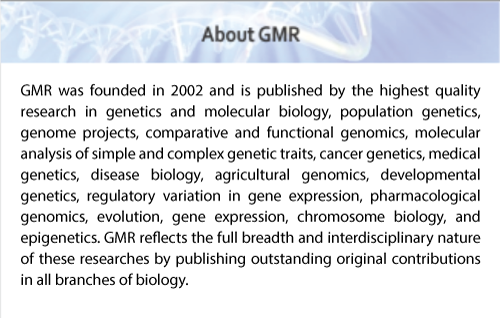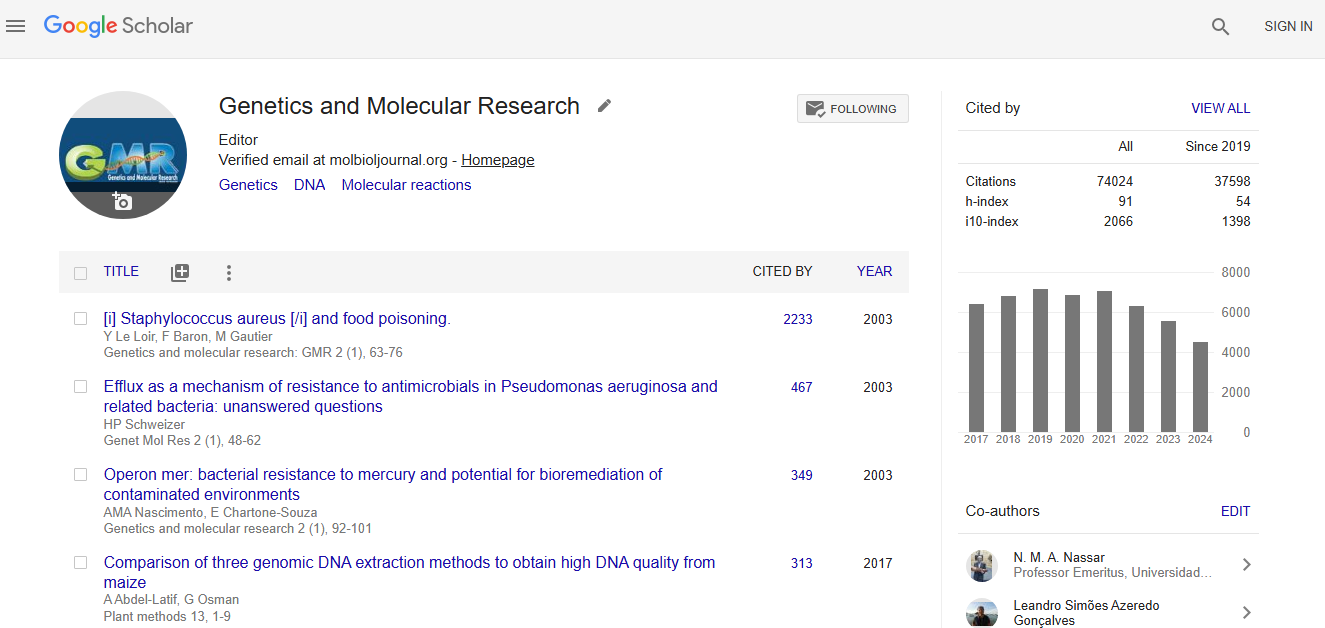Abstract
Loop-tail phenotype in heterozygous mice and neural tube defects in homozygous mice result from a nonsense mutation in the Vangl2 gene
Author(s): B. Chen, H.H. Mao, L. Chen, F.L. Zhang, K. Li and Z.F. XueN-ethyl-N-nitrosourea (ENU) is a powerful point mutagen that can generate random mutations. It has been used to generate mouse mutations to produce phenotypic models of human disease. Neural tube defects (NTD) are common birth defects in which the brain and/or spinal cord can be exposed; however, the mechanisms of these defects are poorly understood. Craniorachischisis is one type of NTD that bears a close resemblance to the phenotype of the loop-tail (Lp) mouse. Here we describe a C57BL/6J Lp mouse generated by ENU-induced mutagenesis. The mutation was mapped to the Vangl2 gene on chromosome 1, near markers D1Mit113 and D1Mit149. Sequence analysis of Vangl2 heterozygotes (Vangl2m1Yzcm/+) revealed a C/T transition mutation that resulted in substitution of a glutamine codon for a stop (nonsense) codon at position 449. The Vangl2 protein is involved in epithelium planar cell polarity. The predicted truncated protein would lack the PDZ-domain binding motif involved in protein-protein interaction; therefore, Vangl2m1Yzcm may be a loss-of-function mutant. Morphological and histological examination of homozygous mouse embryos revealed a neural tube closure defect that leads to craniorachischisis. This Vangl2m1Yzcm mouse represents a valuable model for the study of NTDs in humans.
Impact Factor an Index

Google scholar citation report
Citations : 74024
Genetics and Molecular Research received 74024 citations as per google scholar report
